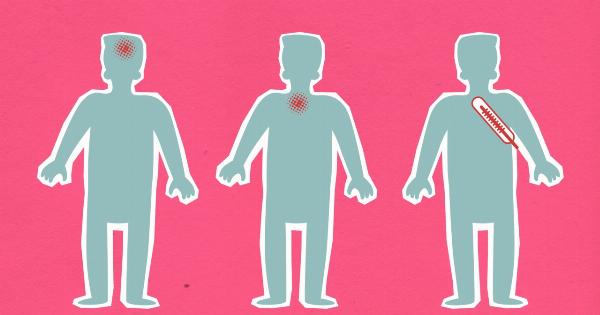Feeling under the weather? Is it the flu or just a common cold? While both the flu and a cold are caused by viral infections and affect the respiratory system, there are some key differences between the two.
Understanding these differences can help you identify your symptoms, seek appropriate treatment, and take necessary precautions to prevent the spread of infection. In this article, we will delve into the characteristics of the flu and a cold, including their symptoms, causes, and potential treatments.
What causes the flu?
The flu, short for influenza, is caused by the influenza virus. There are four types of influenza viruses: A, B, C, and D. Influenza A and B viruses are the most common and are responsible for seasonal flu outbreaks.
These viruses spread easily from person to person through droplets in the air when an infected person coughs, sneezes, or talks. You can also contract the flu by touching surfaces contaminated with the virus and then touching your face.
What causes a cold?
A cold, on the other hand, can be caused by several different viruses, the most common one being the rhinovirus. Other culprits include coronaviruses, adenoviruses, and respiratory syncytial virus (RSV).
Like the flu, a cold is highly contagious and spreads through droplets expelled when an infected person coughs or sneezes, or by touching contaminated surfaces.
How can you differentiate between the flu and a cold?
While the flu and a cold share some symptoms, there are distinct differences that can help you determine which one you are experiencing.
1. Severity of symptoms
The symptoms of the flu tend to be more severe compared to those of a cold. Flu symptoms often come on suddenly and include high fever, body aches, fatigue, and weakness.
A cold, on the other hand, typically presents with milder symptoms such as a runny or stuffy nose, sneezing, sore throat, and a mild headache.
2. Onset and duration
Flu symptoms usually manifest within 1-4 days after exposure to the virus, whereas cold symptoms may take 1-3 days to appear after exposure.
The duration of the flu is generally longer, lasting up to two weeks, while a cold typically resolves within 7-10 days.
3. Fever
Fever is a common symptom of the flu but is uncommon in adults with a cold. If your body temperature rises above 100.4°F (38°C), it is likely associated with the flu.
4. Cough
Both the flu and a cold can cause a cough, but it is usually more severe and persistent with the flu. A cold may present a mild cough, which tends to improve after a few days.
5. Fatigue and weakness
Feeling extremely tired and weak is more commonly associated with the flu. Fatigue can last for several weeks and often leads to decreased energy levels and productivity.
While a cold can also cause fatigue, it is generally less intense and resolves quicker.
6. Headache and body aches
Headaches, body aches, and muscle soreness are more prevalent with the flu. These symptoms can be severe and affect your overall well-being. A cold may cause mild body aches but rarely leads to intense headaches or severe muscle soreness.
7. Nasal symptoms
A runny or stuffy nose is a common symptom of both the flu and a cold. However, a cold often presents with clear nasal discharge, while the flu may produce thicker, colored mucus.
8. Sore throat
A sore throat is typically more prevalent with a cold than the flu. It may be accompanied by sneezing, congestion, or a runny nose.
9. Complications
Complications are more common with the flu and can be severe. Pneumonia, bronchitis, sinus infections, and ear infections can all result from the flu.
Colds rarely lead to such complications but may slightly increase the risk of developing a secondary infection.
10. Contagiousness
Both the flu and a cold are contagious, but the flu is generally more contagious than a cold. People with the flu can spread the virus a day before symptoms appear and up to seven days after becoming sick.
Cold sufferers are most contagious during the first three days of symptoms.
Treating and preventing the flu and a cold
As both the flu and a cold are viral infections, antibiotics are ineffective against them. However, there are ways to alleviate symptoms and promote recovery.
1. Over-the-counter medications
Various over-the-counter medications can provide relief from flu and cold symptoms. Pain relievers like acetaminophen and ibuprofen can help reduce fever, headache, and body aches.
Decongestant nasal sprays or oral tablets can relieve nasal congestion, while cough suppressants can alleviate cough symptoms. Be sure to carefully read and follow the instructions and consult a healthcare professional if you have any underlying medical conditions or are taking other medications.
2. Rest and fluids
Ample rest is crucial for recovery. It allows your body to focus on fighting off the infection. Adequate fluid intake is also essential to prevent dehydration and help loosen mucus.
3. Home remedies
Home remedies like gargling with warm saltwater, using saline nasal sprays or rinses, and drinking warm beverages with honey and lemon can provide relief for sore throat, nasal congestion, and cough symptoms.
Steam inhalation and using a humidifier can help soothe nasal passages and ease breathing.
4. Prevention
Preventing the flu and a cold involves adopting good hygiene practices. Wash your hands frequently with soap and water or use alcohol-based hand sanitizers.
Avoid close contact with sick individuals, and if you are sick, stay home to prevent spreading the infection to others. Vaccination is also an effective way to prevent the flu. There are annual flu vaccines available that protect against the most common strains of the virus.
Conclusion
Although the flu and a cold share similarities, understanding their differences is crucial for proper care and prevention.
By recognizing the severity of symptoms, onset duration, presence of fever, cough intensity, fatigue levels, and evaluating nasal symptoms and sore throat prevalence, you can identify whether you are suffering from the flu or a common cold. Remember, both the flu and a cold are contagious, so practicing good hygiene and seeking appropriate treatment is vital not only for your well-being but also for protecting those around you.




























